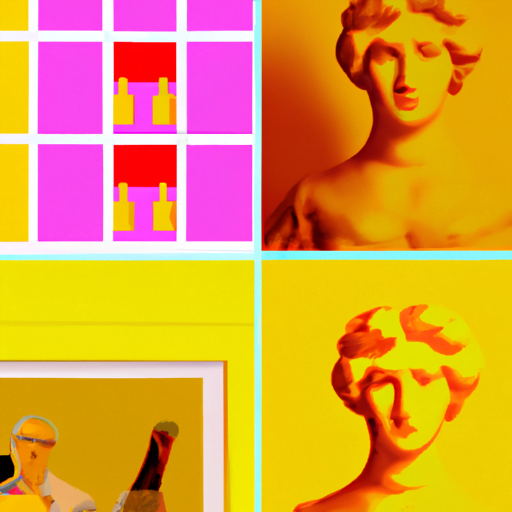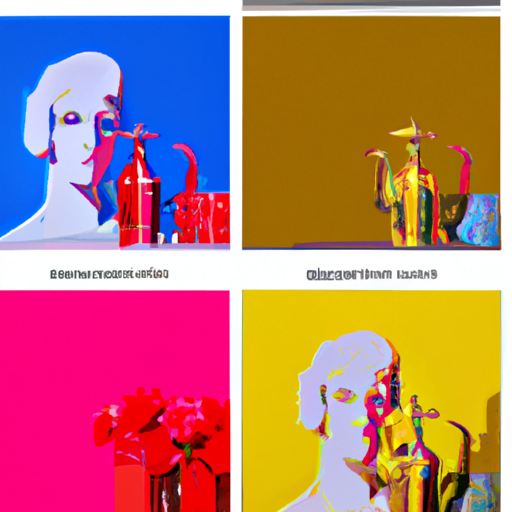
-
Table of Contents
AI-Driven Aesthetics: Exploring Cultural Influences

Artificial Intelligence (AI) has revolutionized various industries, and the field of aesthetics is no exception. With the ability to analyze vast amounts of data and learn from it, AI has the potential to transform the way we perceive and create art. In this article, we will explore how AI-driven aesthetics is influenced by cultural factors, and how it is shaping the future of artistic expression.
The Rise of AI in Aesthetics
AI has made significant advancements in recent years, enabling machines to understand and generate artistic content. One of the key areas where AI has been applied is in image recognition and analysis. By training AI algorithms on large datasets of images, machines can now identify patterns, colors, and compositions, allowing them to analyze and interpret visual aesthetics.
However, aesthetics is not solely based on visual elements. It is deeply rooted in cultural and societal influences, which shape our perception of beauty and artistic expression. Therefore, to understand how AI-driven aesthetics is influenced by culture, we must first explore the cultural factors that shape our aesthetic preferences.
Cultural Influences on Aesthetics
Aesthetics vary across different cultures and societies, reflecting their unique values, beliefs, and traditions. For example, Western art often emphasizes individualism, realism, and the pursuit of beauty, while Eastern art focuses on harmony, balance, and spirituality. These cultural differences have a profound impact on the way art is created and appreciated.
When developing AI algorithms for aesthetics, it is crucial to consider these cultural influences. By training AI models on diverse datasets that represent different cultural perspectives, we can ensure that the algorithms are not biased towards a particular aesthetic style or cultural norm. This inclusivity allows AI to appreciate and generate art that resonates with a wide range of cultural backgrounds.
Case Study: Google’s DeepDream
Google’s DeepDream project provides an interesting example of how AI-driven aesthetics can be influenced by cultural factors. DeepDream uses neural networks to generate dream-like images by enhancing and exaggerating patterns found in existing images. The project gained popularity when it was discovered that the AI algorithm often produced images reminiscent of psychedelic art.
This psychedelic aesthetic can be attributed to the cultural context in which the AI algorithm was trained. The dataset used to train DeepDream consisted of millions of images from the internet, which inherently reflects the cultural preferences and biases of the online community. As a result, the AI algorithm learned to amplify patterns and colors that are often associated with psychedelic art, reflecting the cultural influences of the dataset.
AI as a Tool for Cultural Exploration
While AI algorithms can be influenced by cultural factors, they also have the potential to serve as tools for cultural exploration and understanding. By analyzing large datasets of art from different cultures and time periods, AI can identify common themes, styles, and techniques, providing valuable insights into the cultural context of artistic expression.
For example, the Google Arts & Culture project uses AI to analyze millions of artworks from museums around the world. By identifying patterns and similarities across different artworks, AI algorithms can uncover hidden connections and influences between artists and cultures. This not only enriches our understanding of art history but also promotes cross-cultural dialogue and appreciation.
Case Study: The Next Rembrandt
In 2016, a team of data scientists and art historians collaborated to create “The Next Rembrandt” using AI. By analyzing Rembrandt’s existing works, the team trained an AI algorithm to generate a new painting in the style of the Dutch master. The result was a stunning portrait that captured the essence of Rembrandt’s style, demonstrating how AI can be used to explore and recreate cultural aesthetics.
The Future of AI-Driven Aesthetics
As AI continues to advance, its impact on aesthetics will only grow stronger. AI algorithms have the potential to not only analyze and interpret existing art but also generate new and innovative artistic content. By combining the knowledge gained from analyzing cultural influences with the creative capabilities of AI, we can push the boundaries of artistic expression.
However, it is important to approach AI-driven aesthetics with caution. While AI can assist artists and expand creative possibilities, it should not replace human creativity and intuition. The human element is essential in art, as it brings unique perspectives, emotions, and experiences that cannot be replicated by machines.
Key Takeaways
- AI-driven aesthetics is influenced by cultural factors that shape our perception of beauty and artistic expression.
- Cultural influences vary across different societies and impact the way art is created and appreciated.
- AI algorithms should be trained on diverse datasets to avoid bias towards a particular aesthetic style or cultural norm.
- AI can serve as a tool for cultural exploration, uncovering hidden connections and promoting cross-cultural dialogue.
- The future of AI-driven aesthetics lies in the combination of AI’s analytical capabilities with human creativity and intuition.
In conclusion, AI-driven aesthetics is a fascinating field that explores the intersection of technology, culture, and art. By understanding and embracing cultural influences, AI algorithms can generate art that resonates with diverse audiences and promotes cultural appreciation. As AI continues to evolve, it is crucial to strike a balance between the analytical power of machines and the unique creativity of human artists.
